We used the most amazing Naturally Colored Icing to decorate The BEST Egg-Free Sugar Cookies. And with these naturally-colored icing colors, we’re learning all about color mixing! Plus a great book recommendation on this very colorful topic.
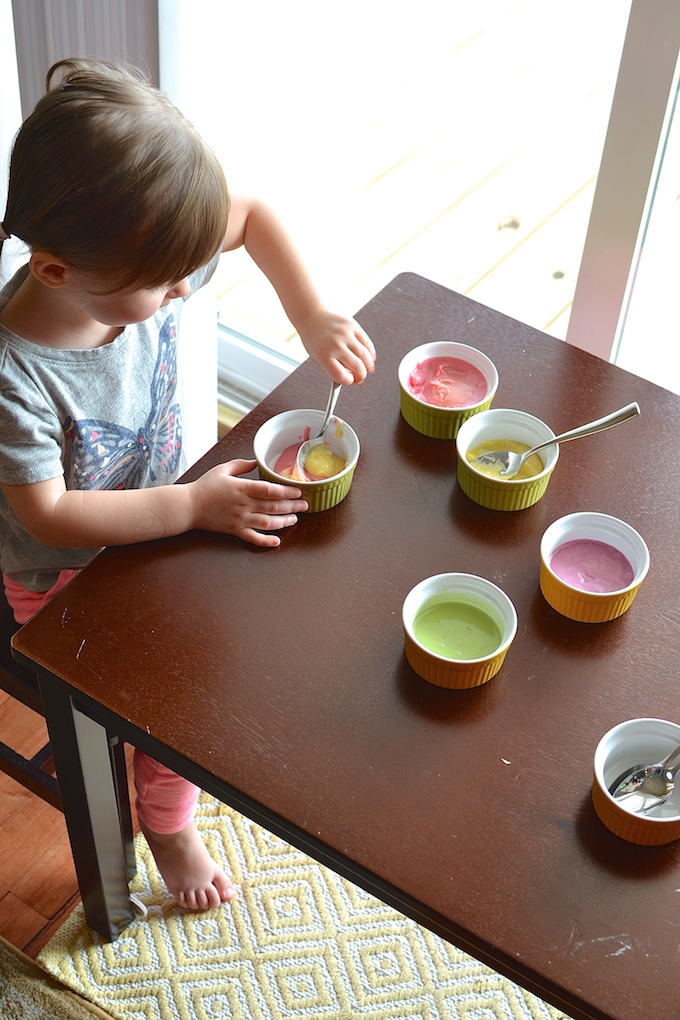
First, a little bit of basic information about colors that you can share with your kids!
- There are three primary colors: red, yellow and blue. They cannot be made by mixing other colors.
- There are three secondary colors: green, orange and purple (or violet). They can be made by mixing two primary colors. Do you know which two colors to mix to make green? orange? purple?
- There are many more colors you can make by mixing primary and secondary colors together.
- Black and white can be added to colors to make them lighter (with white) or darker (with black).
- A color wheel shows the relationship between colors.
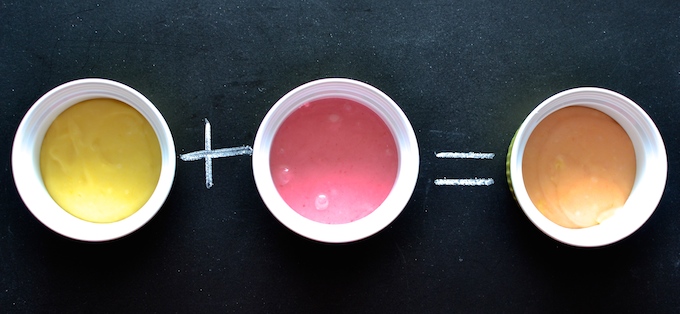
So, HOW does this all work? Let’s explore! You’ll need…
- Naturally colored icing in several colors, including white (which you could make by just mixing powdered sugar, a bit of vanilla extract and a little milk)
- Extra bowls and spoons
Using an empty bowl and a clean spoon, have your child choose TWO colors to mix together. Add a spoonful of each color of icing to the bowl and mix. What new color did you make? You can mix any colors that you’d like! Here are some of our color-mixing experiments…
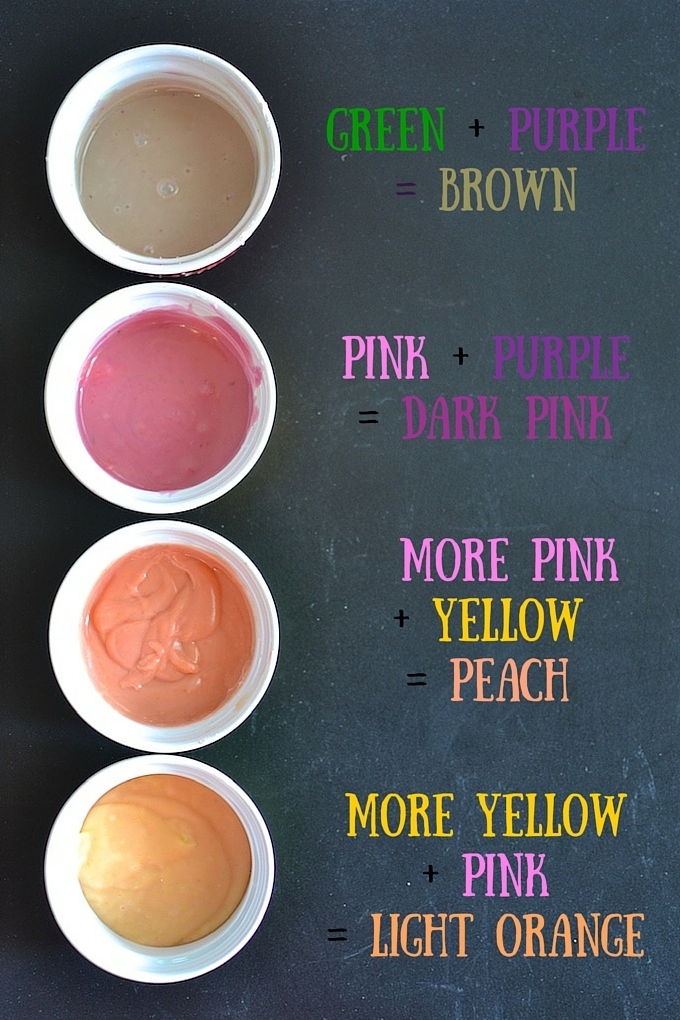
There are many great ideas out there for more activities to learn about color mixing and how different colors are made. A great site called Preschool Inspirations suggests activities such as swirling colored soapy foam, painting a color wheel and using a salad spinner to mix watercolors!
And have you read Mix It Up! by Hervé Tullet? It’s all about color mixing! Through interactive and engaging questions on every page, Mix It Up! illustrates how primary colors make secondary colors. Kids are asked to press, squish, tilt, rub and shake to mix different colors…and the results of their actions show up on the next page! Neat, huh?
The best part about color mixing with ICING, though? Taste-testing your new colors!
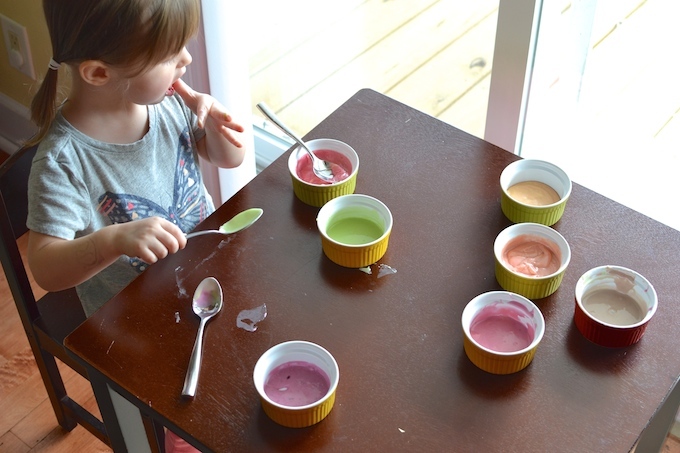
Disclaimer: As with all of our activities, my suggestions for how kids can get involved are based on what has worked in our home. Your child may be able to do more or less based on their age and/or ability. As always, make sure you are properly supervising and engaging with kids that are participating in learning activities.
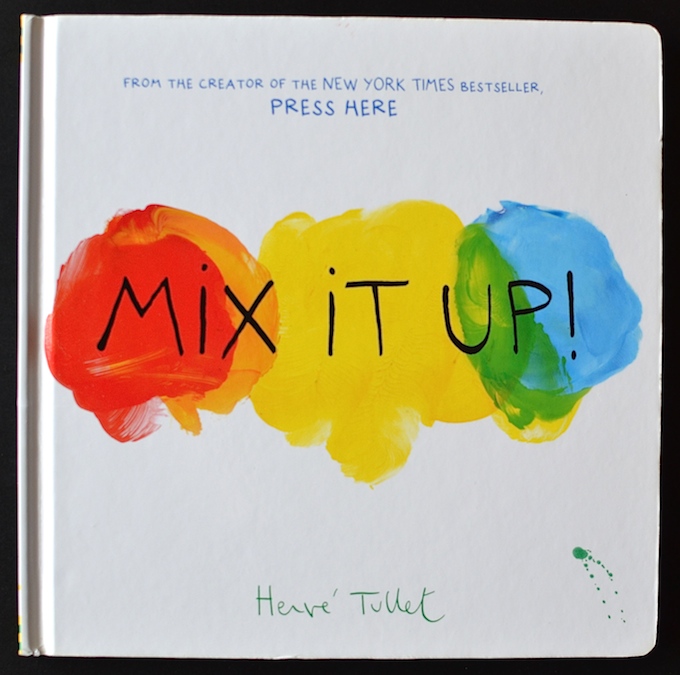
 Samantha says
Samantha says
March 25, 2016 at 6:11 AMI really love this post. Such a cool, fun (and yummy!) experiment for kids of all ages. LOVE the book rec too!
 Sally says
Sally says
March 26, 2016 at 8:24 AMThanks, Sam! The book is really cute…do you know it?
 tiapam says
tiapam says
March 25, 2016 at 11:30 PMBTW, annatto, a natural dye, can also cause problems for some people. It is unforunately going to be one of the dyes often used to replace the artificial dyes. So could create some new problems. FedUp is a great resource for this and other additives: http://fedup.com.au/factsheets/additive-and-natural-chemical-factsheets/160b-annatto
 Sally says
Sally says
March 26, 2016 at 8:23 AMThank you for this link! I’ll read up on it and the FedUp source in general. Thanks, Pam!